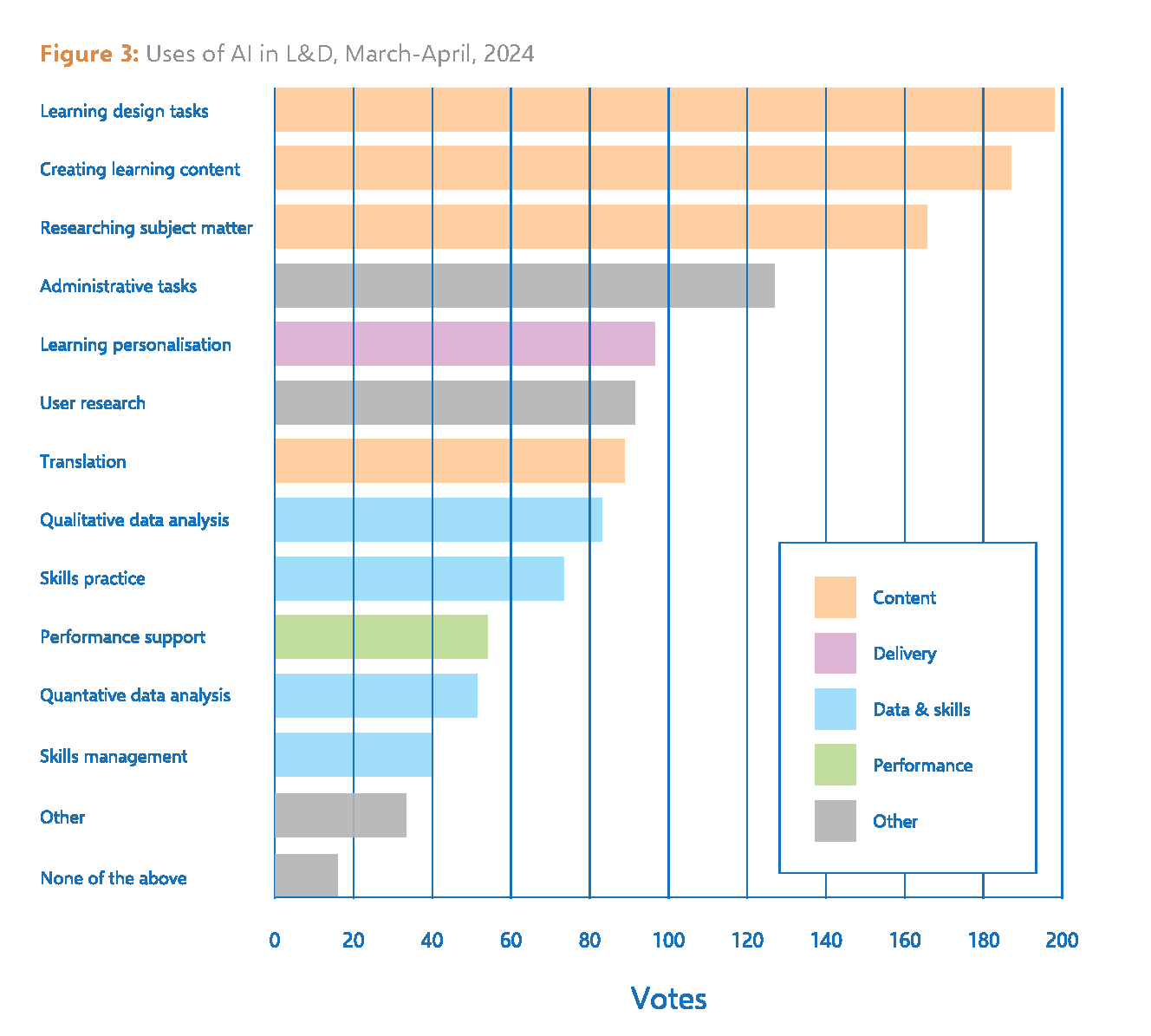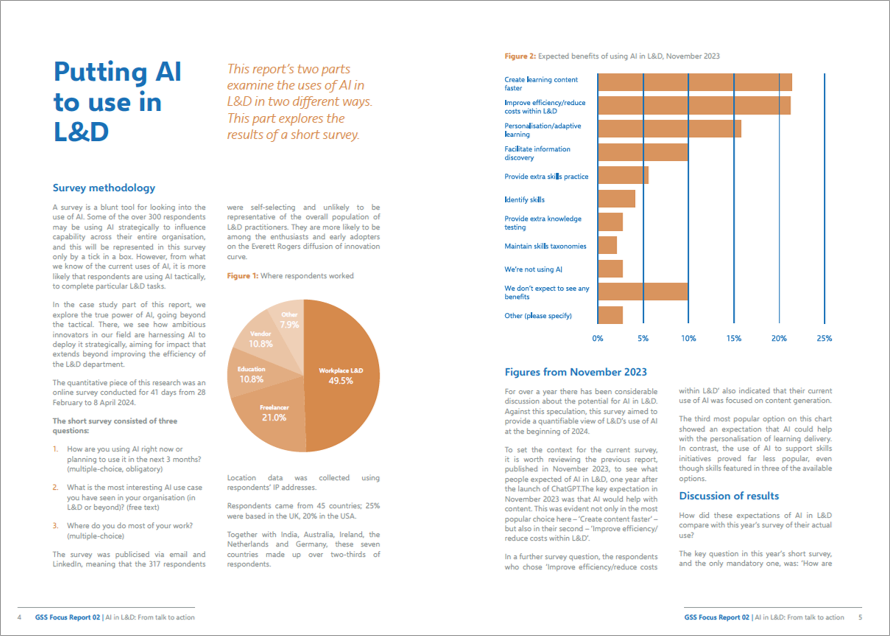AI in L&D: From talk to action

We surveyed over 300 L&D professionals globally and explored how they are using AI. Some of the answers you might expect, others will come as a surprise.
We also interviewed seven practitioners to compile case studies based on their pioneering. These case studies are both informative and inspirational.
The result: a 32 page report which for the first time shows how AI is being used in L&D. If you've been wondering where to start with AI in L&D, this is the place.

From the report conclusions:
If 2023 was the year of L&D’s fascination with AI, then 2024 is the year of action, or at least its its beginning. When planning to put AI to use, we can learn a lot from those that have already started.
As illustrated by Egle’s Complexity Scale, there is only one way to make the most of AI: to step out of the L&D department and engage with the business. Moving beyond productivity wins within the L&D department within the L&D department, more strategic use cases require a mandate that helps to unlock resources and shows the willingness of the business to tolerate experimentation, uncertainty and iterative development.
AI is not a single entity, existing by itself in isolation. It is a single term loosely used to describe a range of disparate activities that have in common: algorithms, large data sets and the need for considerable processing power. Making the most of AI involves L&D understanding its underlying mechanisms, its need for quality data, and finding the problems it could be most useful for. Following that, using AI solutions with impact means deploying them in close cooperation with departments outside L&D.
For L&D, this is both entirely novel and utterly familiar.
It is familiar because whether AI is used to support coaching, infer skills, personalise learning activities, or for any other reason, this is a learning technology implementation. There is a long history of L&D departments failing with such implementations because they miss the key steps at either end: discovery at the beginning, to understand the needs of the business; maintenance at the end, to ensure the implementation continues to provide value and adapts to changing circumstances.
There is nothing new here. To use AI well, L&D needs to do the boring stuff well: have the uncomfortable conversations, build the relationships, set the expectations, and be doggedly persistent against indifference and inertia.
As well as being familiar, though, AI is novel because of its dazzling power in bringing automation to previously untouched areas such as coaching and skills. Here, L&D needs to familiarise itself rapidly with the possibilities and limits of this astounding technology, so that it can make well-informed decisions about what can and cannot be done, as well as what should and should not be done.
AI can be compared to electricity – a technology with tremendous power, one that can both astound and damage, which can do a great deal, and which will eventually be built into tools that we use daily and take for granted (this already happens with speech recognition). None of this will happen overnight. The adoption of fundamental technologies in the past, such as electricity and the World Wide Web, shows that it may be years before AI is embedded into our lives in this way.
In the meantime, we can expect its scope to widen. It has moved on from the initial phase, where it is a substitution technology that does the old things more efficiently (typically content production). It is now being used to do old things in new ways (for example, building skills taxonomies), and will progress to doing new things in new ways, things that we cannot easily predict right now. This may include, for example, using organisational network analysis to understand human connections and surface, curate and share the tacit knowledge within them.
In 2023, the advice to L&D practitioners was to experiment, to become familiar with AI tools by putting them to use. That is now a given. The advice for 2024: step up. There is tremendous power in AI, and we must marry this to our understanding of learning for the benefit of both employers and employees.
This won’t necessarily be easy. It will require learning new things around AI, and it will demand the relearning of what we should already know about learning technology implementations. In particular, in a world still uncertain about AI, it will be essential for L&D to build credibility with this technology, and to engender the one thing our case studies all shared: trust.
Last year, AI generated a lot of talk. This year, we can’t wait for that talk to finish. It’s time to move from talk to action.
Donald H Taylor and Egle Vinauskaite


